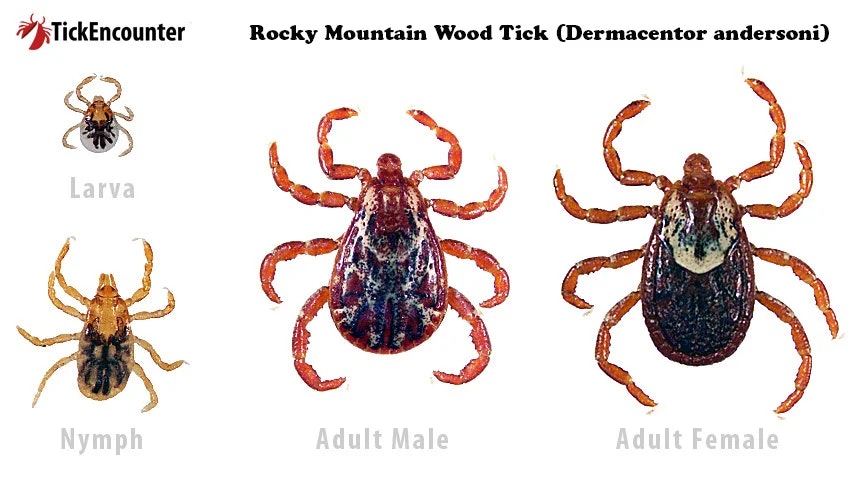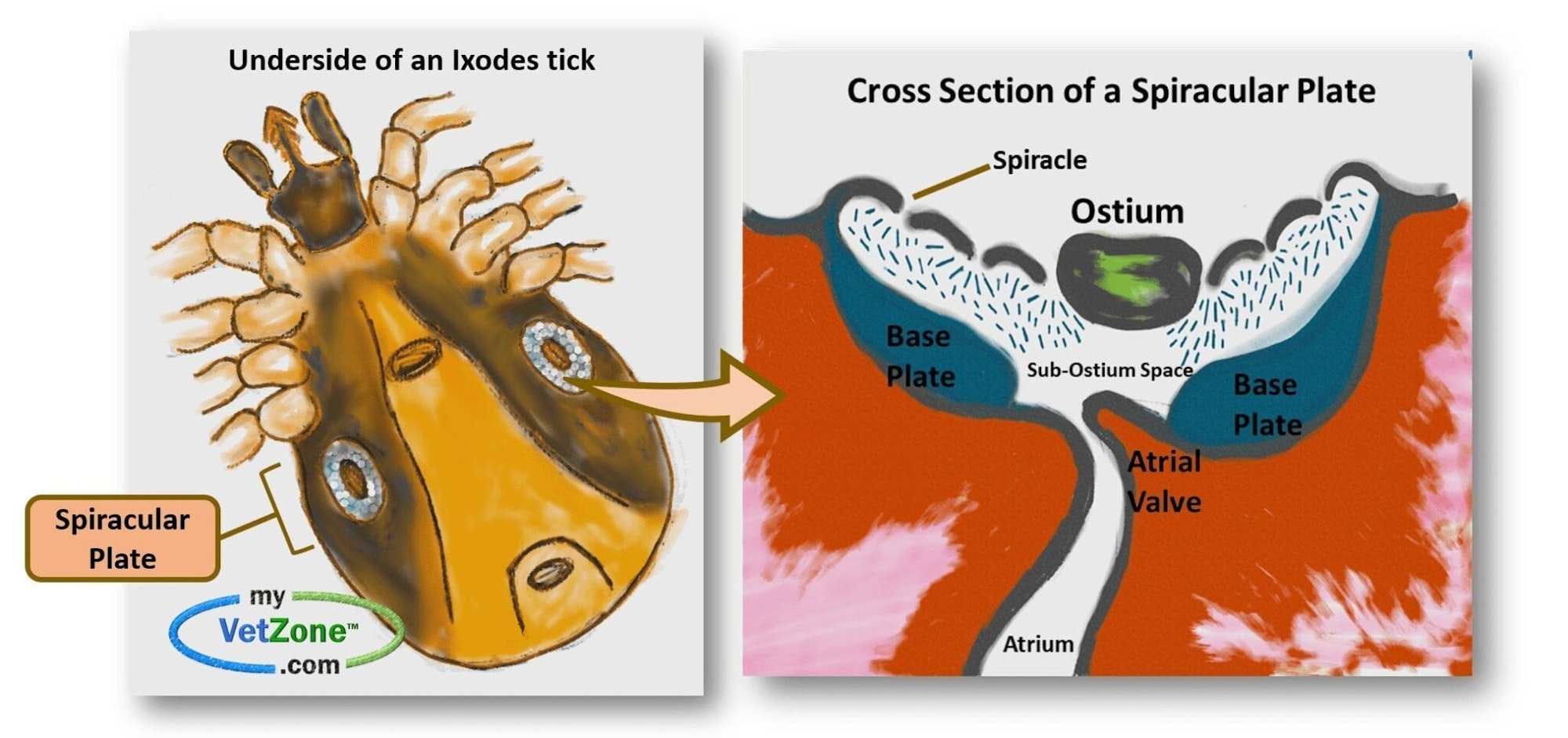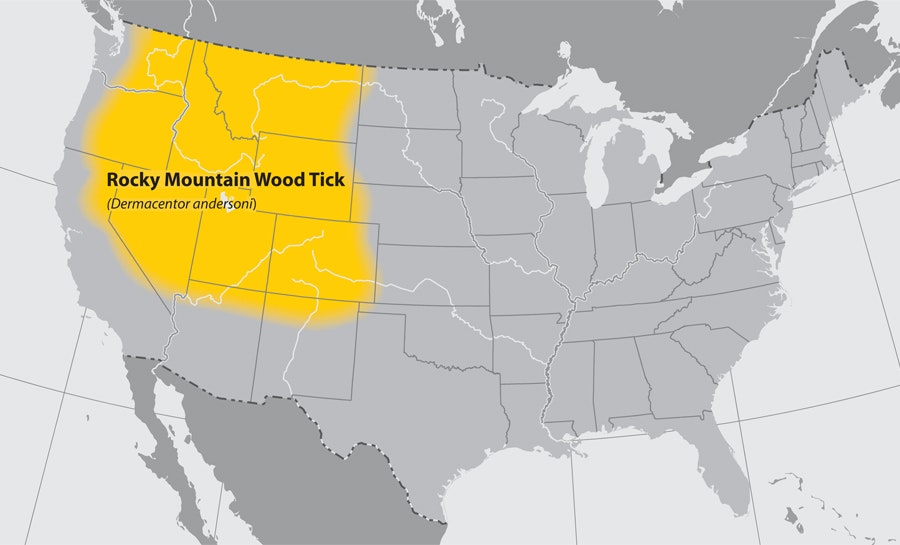Rocky Mountain Wood Tick (Dermacentor andersoni)
Host Type: 3-Host Tick
Wood Tick ID:

The wood tick is confused a lot with the American Dog Tick, since they both have white markings on the adults. Differentiation between the different Dermacentor species relies on the size and number of goblets on the spiracular plates. D. andersoni ticks have 100–200 moderately sized goblets, while D. variabilis ticks have more than 300 small goblets. These plates are located on the ticks rear underside and look like small ‘Q’ break-pads. These can look like they are filled with grainy sand, which each sand granule is a goblet cell.

Diseases it can transmit:
Rocky Mountain Spotted Fever (Rickettsia rickettsii), Colorado Tick Fever Virus (CTF) and Tularemia (Francisella tularensis).
Distribution in the United States:

